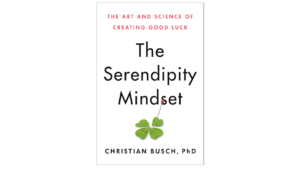Emotional Hijacking happens to all of us every once in a while. Think back to the last time you were bubbling over with frustration or anger at work, trying to keep it together, and then you blew up.
You just said what you felt and thought. And shortly after, you regretted it.
That’s emotional hijacking.
It’s important to understand what’s going on in your brain when this happens because you can change this behavior. And you need to.
Learning how and why your body and brain can control your words and actions is key to your growth as a leader.
This is another blog in a series I’m doing about emotional intelligence (EQ). I’m passionate about EQ because it’s a powerful topic and something that leaders and employees at all levels should work to develop.
As you learn about EQ on your own, you’ll hear the term brain science mentioned–a lot. I’m not a brain scientist, but I am an executive coach and an expert in emotional intelligence related to leadership development.
And I believe everyone should understand how their brain affects their behavior, especially when working to improve emotional intelligence.
To understand what’s happening in your brain during an emotional hijacking, let’s look at a common trigger: Driving.
Imagine you are driving on the freeway or motorway. It’s early on a Sunday morning. The weather is great, and the roads are clear.
In the backseat, you have something or someone you love and cherish. Maybe it’s your kids, your grandmother, your cute Corgi, or maybe your new MacBook and a huge, new TV you bought, too.
You’re driving along, and out of NOWHERE, a car cuts you off. You’re totally shocked, and this is how your body reacts:
- Your heart is pounding.
- Your breathing becomes faster.
- Your arms and shoulders tense up as you grip the steering wheel.
- Perhaps you gasp, “Ahhhh!!”
- Maybe you swear.
- Maybe you start yelling.
These are immediate, automatic reactions that you have no control over.
In this scenario, your safety–and the safety of the children, grandma, the dog, your laptop, and your TV, are threatened.
Your brain sees this situation as dangerous and reacts faster than you can realize.
In these true fight or flight or life and death situations, we have been trained through evolution to react in certain ways–fast.
And your brain doesn’t ask for permission before it takes action.
This is a perfect example of an EQ hijacking. Your emotions have taken over.
Eventually, you realize the car that cut you off is far in the distance and is no longer a threat, and a few things happen:
- You take your foot off the gas.
- Your heart begins to slow down.
- You may take a sigh or two.
- Your pulse begins to slow down.
- You apologize to your loved ones for your outburst.
- You realize you are OK.
This story is an example of emotional intelligence at play, and I’m using it to illustrate what happens when emotions quickly take over and govern your decisions without your approval.
Your brain takes information, reacts, and signals to your body that something bad is happening. Your brain makes a decision based on thousands of years of programming. It’s fight or flight.
Inside your head, your reactions are governed by the emotional center of your brain, the amygdala.
What is interesting and frustrating about EQ is that your brain often makes emotional decisions before making logical ones.
Then, and this can be a transition that happens in just milliseconds, the logical part of your brain–the prefrontal cortex takes over.
This is the part of your brain that handles decision-making and executive functioning. Planning, attention, problem-solving, working memory, and decision-making. You know–important things! It is like the CEO of your brain.
After the initial emotional reaction, the EQ hijacking, in this case, logic is now in front and center, literally.
Logic says:
- That car is already far away.
- That person’s not cool, and you shouldn’t allow your day to be ruined by them.
- Forget about it. Forget about them.
But you might be so angry that you say, “Screw you” to the logical part of your brain, and you allow the emotional center to stay in the driver’s seat. Literally and figuratively.
These two parts of your brain are sometimes at odds with each other. They are battling it out.
The amygdala says, What a jerk! Speed up and cut him off!
The prefrontal cortex says, Ignore him. Take a few deep breaths and relax. Focus on driving safely.
I’m really simplifying this.
The key part to get is that you can begin to recognize what is going on in your brain and in your body, and how as a result, you sometimes say and do something that is against your best interest. Because you’re being emotionally hijacked.
This is so important to your learning and development around EQ.
You can feel what is going on–you have an emotional and physical reaction to it–before you can think logically about it.
You can take this concept–the battling parts of your brain and when one wins over the other–and put it into your workplace.
Here’s how to put this into practice for you:
Who’s that person who drives you nuts at work? For now, let’s call her annoying Annie.
Everything she does drives you bonkers, and you just want to, just want to lash out at her!
Emotionally, you feel what she does to you, and you react BIG. That is the amygdala.
But the last time you did lash out at Annie, you realized–maybe a few seconds later or an hour later or perhaps the next day–that that wasn’t a smart thing to do.
You felt silly. You felt immature. And you lost some credibility with her and others.
Logically, you know you must better understand and manage your emotions when working with her.
So, the next time Annoying Annie does something that irritates you, you tell yourself to allow the conversations to happen: between the emotional and logical center of your brain.
Let your emotional center get frustrated, and begin talking to the logical center. Then, allow the logical center to make a conscious decision of what to say and do.
OK, let’s recap.
To increase your EQ, you need to recognize that your brain is wired to make decisions based on the information it takes in. Your brain likes to make decisions fast.
It’s been designed that way–from the days of cave people. It’s a factor of human evolution.
But those days are long gone. Each of us can grow and develop our abilities to control our reactions.
We can learn to listen to our emotions and decide what to do with fewer impulsive, knee-jerk reactions.
As you learn more about EQ, you’ll soon see that at work each day you have many opportunities to think about how you can make conversations between those two sections of your brain–the emotional and logical parts–happen more often.
Here’s your homework: the next time you feel that frustration bubbling up, pause, and give your logical center a moment to kick in before you react in a way you’ll regret later.






